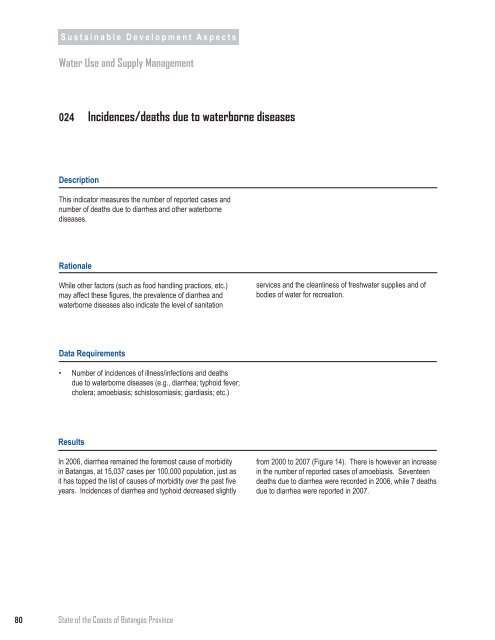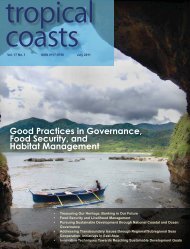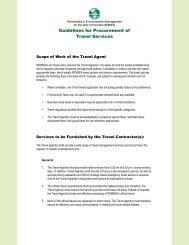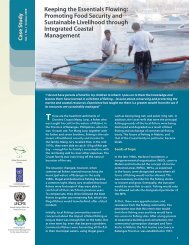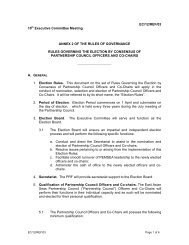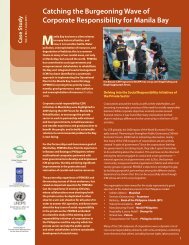Download PDF Copy - Pemsea
Download PDF Copy - Pemsea
Download PDF Copy - Pemsea
You also want an ePaper? Increase the reach of your titles
YUMPU automatically turns print PDFs into web optimized ePapers that Google loves.
S u s t a i n a b l e D e v e l o p m e n t A s p e c t s<br />
Water Use and Supply Management<br />
024 Incidences/deaths due to waterborne diseases<br />
Description<br />
This indicator measures the number of reported cases and<br />
number of deaths due to diarrhea and other waterborne<br />
diseases.<br />
Rationale<br />
While other factors (such as food handling practices, etc.)<br />
may affect these figures, the prevalence of diarrhea and<br />
waterborne diseases also indicate the level of sanitation<br />
services and the cleanliness of freshwater supplies and of<br />
bodies of water for recreation.<br />
Data Requirements<br />
• Number of incidences of illness/infections and deaths<br />
due to waterborne diseases (e.g., diarrhea; typhoid fever;<br />
cholera; amoebiasis; schistosomiasis; giardiasis; etc.)<br />
Results<br />
In 2006, diarrhea remained the foremost cause of morbidity<br />
in Batangas, at 15,037 cases per 100,000 population, just as<br />
it has topped the list of causes of morbidity over the past five<br />
years. Incidences of diarrhea and typhoid decreased slightly<br />
from 2000 to 2007 (Figure 14). There is however an increase<br />
in the number of reported cases of amoebiasis. Seventeen<br />
deaths due to diarrhea were recorded in 2006, while 7 deaths<br />
due to diarrhea were reported in 2007.<br />
80 State of the Coasts of Batangas Province


